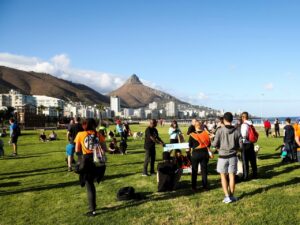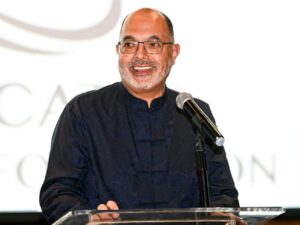[imagesource:youtube/nbcnews]
One day, when these four children are ready, they will be able to tell one of the more remarkable tales of survival.
The fact that these kids knew the land and had indigenous knowledge of what to eat and what not to eat, how to get water etc, meant that they could survive 40 gruelling days in the Amazon jungle.
The four youngsters – Lesly, 13; Soleiny, 9; Tien Noriel, 4; and Cristin, 1 – were found terribly thin but very much alive on Friday after rescue operations combed through over 2 500 kilometres of dense bush, NBC News reported.
While the family of the children and the nation felt immense relief when they were finally found, with news headlines shocking the world, the children were being rehydrated and treated in hospital as they faced the harrowing ordeal that they’d just ploughed through.
Fidencio Valencia, an uncle of one of the children, told Colombian media: “They have been drawing. Sometimes they need to let off steam.”
The children were travelling with their mother from the Amazonian village of Araracuara to the town of San José del Guaviar when the single-engine Cessna plane nosedived into the forest on May 1. The children’s mother Magdalena Mucutuy Valencia was killed, leaving them alone and stranded in the Amazon jungle. The plane’s pilot Hernando Murcia Morales and Yarupari indigenous leader Herman Mendoza Hernández were also killed in the accident.
When rescue operations located the crash site 16 days later, all they saw of the kids was a baby bottle, an abandoned tiny pair of shoes and some footprints leading away from the wreckage:
The children’s maternal grandfather, Narciso Mucutuy, said in a video the Colombian Defense Ministry released Monday that the oldest sibling, Lesly, pulled the youngest, Cristin, from the wreckage after having spotted her foot.
Manuel Ranoque, the father of the two youngest children, said at a news conference Sunday that Lesly, 13, told him her mother was alive for about four days after the crash and had told the children to leave her and look after themselves.
He said that the children will tell their own story when they are ready.
Rescuers also found remains of fruit and fariña, which is a type of cassava flour that is a staple food in the Amazon region, and the sustenance that kept the children alive, per CNN:
The children ate “three kilograms (six pounds) of farina,” a coarse cassava flour commonly used by indigenous tribes in the Amazon region, said spokesperson Pedro Arnulfo Sánchez Suárez.
“Days after the crash, they ate the farina which they had carried there… but they (eventually) ran out of food and decided to look for a place where they could stay alive,” Suárez said.
“Their indigenous origins allowed them to acquire a certain immunity against diseases in the jungle and having knowledge of the jungle itself – knowing what to eat and what not to eat – as well as finding water kept them alive – which would not have been possible (if they) were not used to that type of hostile environment.”
He added that they were malnourished but fully conscious and lucid when they were found. Indeed, being members of the Indigenous Huitoto group allowed them to become well-versed in the lore of the forest from early on, and it is precisely this indigenous knowledge that saved them:
“Finding enough high-quality food, building shelters and keeping away from harm’s way for 40 days and nights in a remote area of the Colombian Amazon would challenge most adult Westerners … never mind three children younger than 12 carrying an 11-month-old baby,” said Carlos Peres of the University of East Anglia in England, an expert in Amazonian biodiversity who was raised in the Amazonian city of Belém in Brazil.
“Some 100 years ago, that body of knowledge was very vigorous, but there were no aircraft one could crash in the jungle; 100 years into the future, there may be even more efficient aircraft, but very little of that knowledge will be left,” he said.
The kids also had to know how to protect themselves from the rain, because, for 16 hours a day, it’s only raining.
The children were blessed with multiple strokes of luck as well. For one, the forest was in harvest, reports say, so the fruit was plentiful. Secondly, they had befriended a Belgian Shepherd search dog named Wilson that belonged to special forces, who had probably kept their spirits up. Unfortunately, Wilson went missing on May 18, but the children’s grandfather confirmed that the dog kept the children company and “became their faithful friend” before it disappeared into the forest.
Considering the children’s ordeal, they are in remarkably good condition.
Astrid Cáceres, the general director of the Colombian Institute of Family Welfare said that they are not speaking as much as they would like, but that will take time. They are also still frail and cannot eat food and are still just being rehydrated, which will take another week or so in the hospital for them to get back to normal.
[source:nbcnews]





